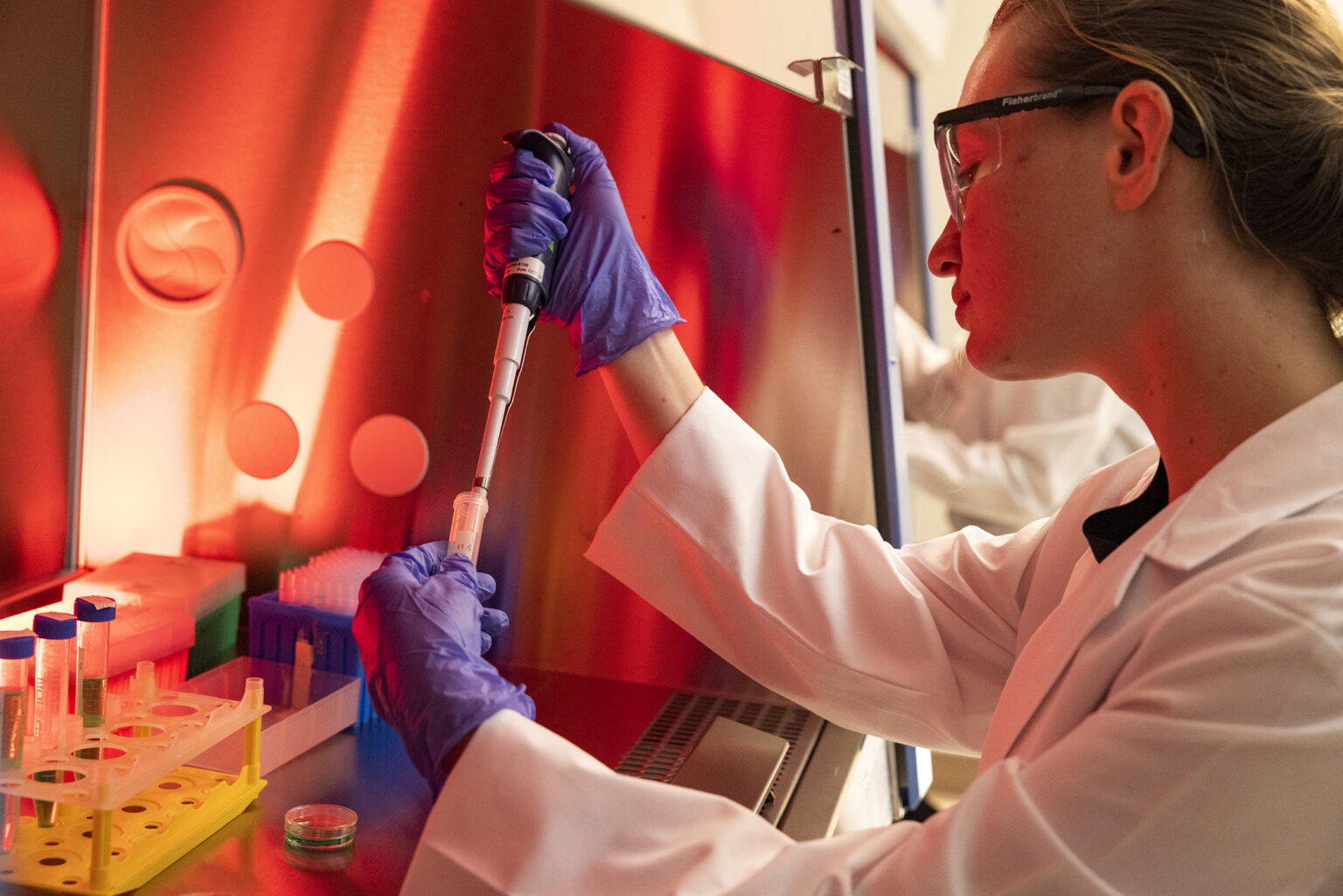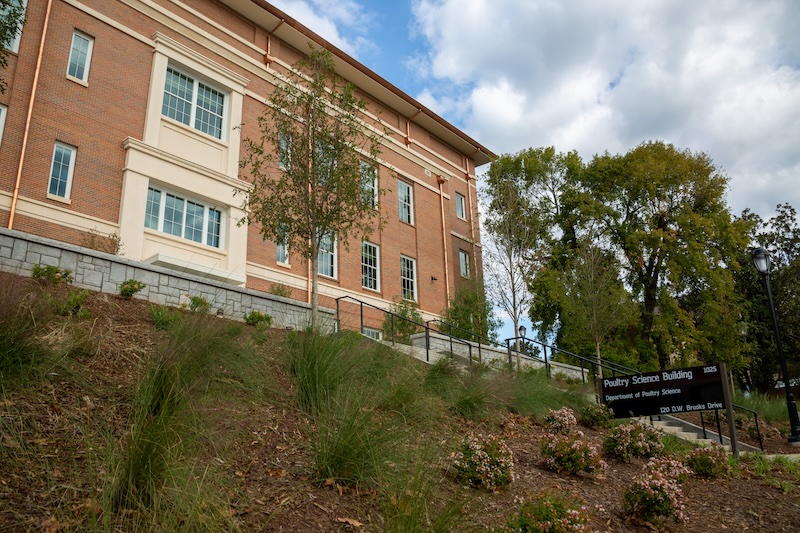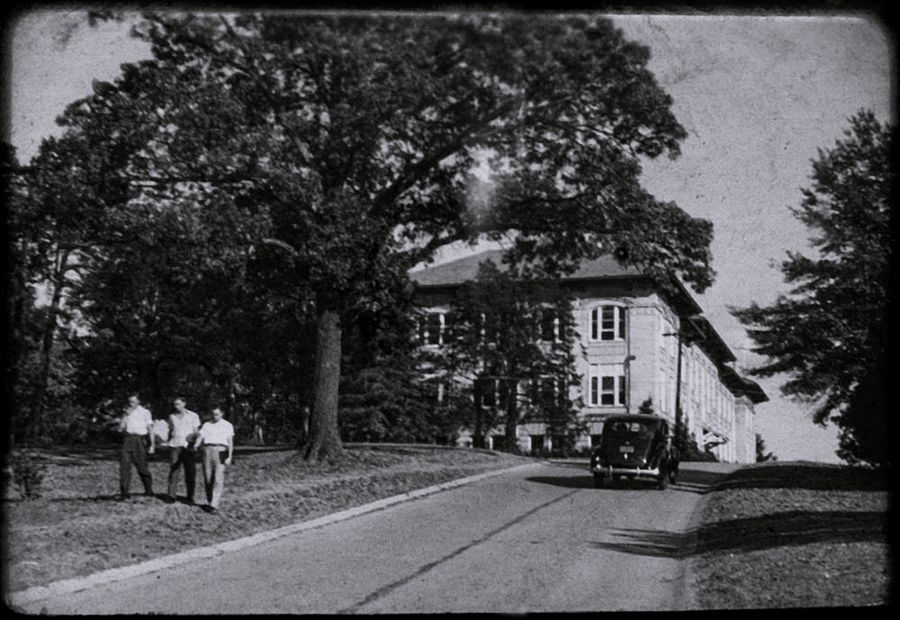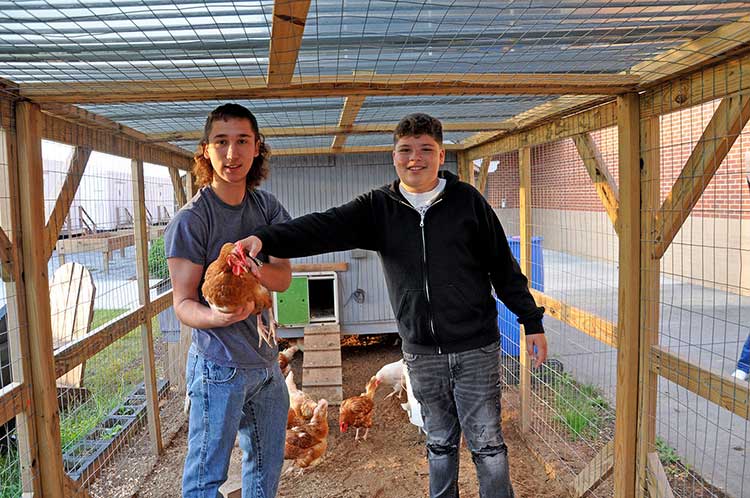
South Florida is a land of juxtaposition of urban sprawl and natural scenery.
The former has gated communities with well-manicured lawns, golf courses and lots of commerce; the latter consists of shallow wetlands lush with vegetation, dotted with cypress and pine trees and teeming with wildlife.
The human population in Florida has boomed in the last few decades following migration of people from other states and countries, resulting in rapid urbanization.
From the city outskirts, another population is also on the move — the American white ibis that used to occupy the pristine wetlands of the Everglades are now frequent visitors of the urban landscape. Since 2009, a team of UGA researchers has been working to figure out what this means for the health of the white ibis and, ultimately, human populations.
Urbanization of the ibis
The white ibis is a species of wading birds related to egrets, cranes and storks. Their bodies are entirely white with an eight-foot wingspan. They have pinkish orange faces with long orange feet to match. Their bills are curved downward and are sometimes stained toward the end, as if dipped in black ink, from foraging in marshes and mudflats for aquatic insects and crustaceans. When in flight, they sometimes give out slow, nasally and rather unenthusiastic honks.
The encroachment of human development on natural habitats has pushed some white ibis to abandon their natural homes in pursuit of life in the city. Nowadays, it’s common to see flocks of ibis at urban parks taking food handouts from park visitors, with birds jockeying for position much like Black Friday shoppers pushing each other out of the way at a store.
.jpg)
The change in ibis behavior may not be alarming to most people. But to Sonia Hernandez, professor in the Warnell School of Forestry and Natural Resources, the phenomenon could have important implications for human-wildlife conflict and disease transmission.
She has reasons to be worried, because the recently urbanized Australian white ibis — which locals Down Under have affectionately dubbed “bin chickens” for being frequently seen around trash cans and dumpsters — have been found to carry diseases such as Salmonella and avian influenza.
“I became concerned that the same issues that were affecting Australian ibis were happening to the American ibis,” Hernandez said, “and that the American ibis was at the beginning of a continuum toward ‘urbanization.’”
With a joint appointment in forestry and the Southeastern Cooperative Wildlife Disease Study at the College of Veterinary Medicine, Hernandez has been studying urban wildlife as zoonotic disease carriers and the pathways for human-wildlife disease transmission. She wanted to know how adopting an urban lifestyle affects white ibis’ ecology, behavior, health, immunology, diet, movement patterns and habitat use.
To answer these questions, she assembled a team of researchers consisting of animal physiologists, disease ecologists, landscape ecologists, microbiologists and disease modelers.
“We needed a multidisciplinary team to come at our various questions from multiple perspectives,” said Hernandez. “We needed folks that were engaged in the system, loved it and wanted to overcome the logistical hurdles to answer the big questions.”
For the last decade or so, the research team, with help from numerous graduate students and field technicians, has been piecing together a picture of ibis health and behavior in south Florida by investigating the population from many different angles.
Catch me if you can
One important step for researchers to answer their questions was to get their hands on the blood and fecal samples of the ibis in both urban and natural areas. This meant capturing birds in places such as wetlands, agricultural areas, city parks and, occasionally, public parking lots.
Traditionally, researchers have used cannon nets — large nets shot from a cannon over a flock of birds on the ground — to capture waterfowl and wading birds. However, this method could injure birds in the process, and explosives are not allowed in urban settings, so Hernandez and her team had to get creative.
After trying different approaches, they settled on modifying existing methods, including the hand-triggered claptrap, which was a net inside a frame that was put on the ground with bait in the middle. When birds were lured into the net, one pulled the frame to trap the birds. They also placed leg lassos on the ground with bait, and when a bird stepped into the lasso, the researchers tightened it around the bird’s legs to immobilize them.
The ibis soon caught on to what they were doing, however. Hernandez recalls a time when the team wore red shirts emblazoned with UGA logos when capturing birds in the field. The ibis quickly recognized them by their clothing and became wary.
“The minute they saw a red shirt, they were like, ‘Nope, we want to have nothing to do with you whatsoever,’” said Hernandez.
The team then started switching outfits and acting nonchalantly when attempting to lure ibis into the traps, lest they became suspicious.

Avian wariness was not the only thing the field crew had to worry about. One day when they were trying to capture birds in a grocery store parking lot, some women who went there every day to feed the ibis — with bird seed and dog food — called the police because they thought the researchers were hurting the birds.
Meanwhile, to capture ibis in more natural settings, Hernandez and her team set up mist nets with fine mesh that were difficult for birds to see near wetlands. When in flight, some birds will often land in an area if they see birds that look like them.
“Ibis are actually notorious for that,” said Hernandez. “They’ll scan the environment and if they see other birds like them, they’ll go down and investigate.”
To take advantage of this behavior, they lured ibis into the mist nets by using decoys made from covering flamingo lawn ornaments with white paint, calling them “snow-mingos.”
A netful of ibis was hard for alligators to resist, though, and it wasn’t long before one emerged from the water and grabbed the net with birds in it before Hernandez’s student could get to them.
“That will go down in history as one of the most problematic situations,” said Hernandez, as they had to contact the authorities to help them find the alligator and retrieve the net.
The trade-offs of urban life
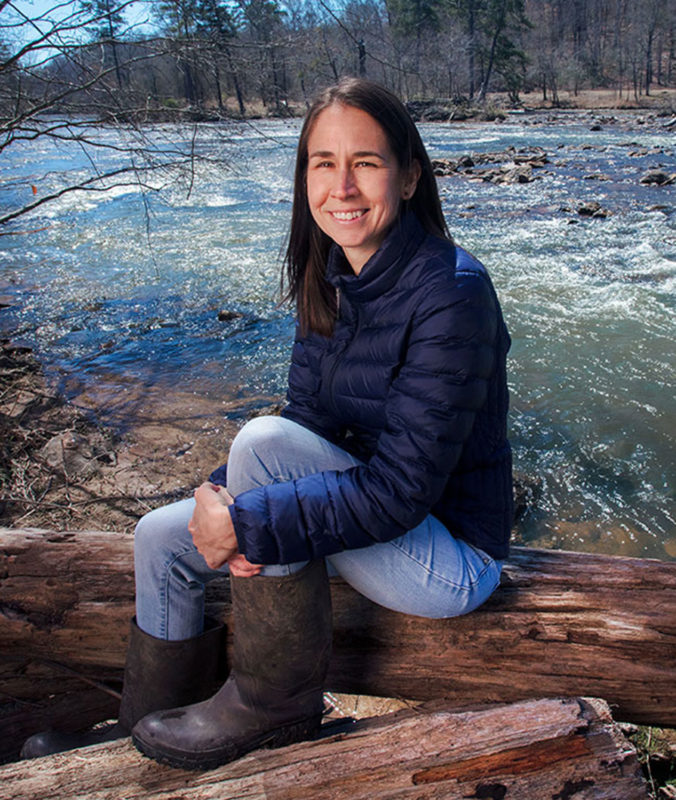
All in all, the impact of city life on white ibis is not as clear-cut as the researchers thought, and much of what they found surprised them.
“All of it has been a real journey, to be honest,” said Hernandez.
Her suspicion about ibis carrying zoonotic diseases was confirmed: The researchers found Salmonella in both the urban and natural ibis they captured.
Salmonella has traditionally been thought of as a foodborne disease that can infect both humans and wildlife, “and that’s where epidemiology opens and closes,” said Erin Lipp, professor in the College of Public Health, who was involved in the study. But Lipp thinks there might be more to the story.
“If you look at the biogeography of Salmonella serovars, it’s really interesting. It really suggests that there’s a landscape effect. There’s something going on that’s not just what people are eating, especially when you get out of outbreaks and just look at sporadic cases,” said Lipp.
Serovars refer to different subtypes of the bacteria species that cause the disease. Lipp said there are clear trends to the geographical patterns of where different Salmonella serovars show up in clinical cases.
“We think this is related to both the environmental factors — seasonality, weather, climate, landscape — that can affect persistence of serovars differently, but also different animal hosts that may be more likely to carry one serovar versus another,” said Lipp.
In other words, humans and animals may pick up the disease not only from their food, but also from their environment. This might be what’s happening with white ibis, because the type of Salmonella found in ibis also match those found in their surrounding water and soils.
“I was very surprised that I was right about Salmonella, and it concerns me because ibis pick up whatever Salmonella is in the environment and then move it around,” Hernandez said.
Hernandez and her colleagues were further surprised to find that some of the Salmonella genotypes in ibis match those found in humans, according to a Centers for Disease Control and Prevention database.
Although there is an overlap, Lipp said that we shouldn’t jump to conclusions about how the Salmonella bacteria move between ibis and human populations.
“It’s sort of like the correlation, but not causation. We don’t know which way it moves, and it may move both ways.”
Not only do ibis carry Salmonella, but the prevalence of the disease was higher in urban ibis populations compared to natural ibis populations. The researchers dug deeper to find out why.
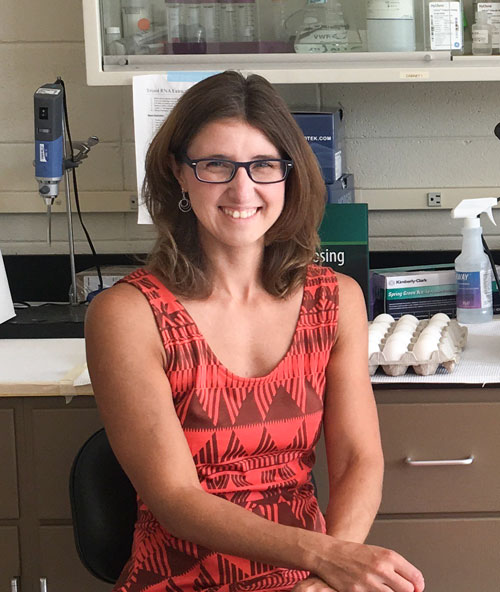
Diet has long been thought of as tightly linked to the immune system. A less healthy diet can affect the bacterial community, or the microbiome, in our guts which could weaken our immunity. The same applies to other animals.
Both field observations and stable isotope analysis of blood samples revealed that the urban ibis diet consisted largely of food provided by humans — a diet low in protein — whereas their natural counterparts consumed mostly freshwater invertebrates and crustaceans. The fecal sample analysis also showed that the urban ibis had a different, less diverse, gut microbiome composition compared to natural ibis.
“If you’ve got an urbanized diet that’s affecting the gut microbiome, there’s a chance that it can affect whether or not you can get colonized extensively by Salmonella and by other pathogens,” said Lipp.
The research team next turned to stress as a potential indicator of ibis health, and things started to get murky.
“We went into it thinking that urbanization was this terrible thing and that it was going to negatively impact the birds in terms of both their stress responses and also their immune function,” said Kristen Navara, associate professor in the College of Agricultural and Environmental Sciences Department of Poultry Science and the principal investigator overseeing the physiology aspect of the study.
But they were surprised to find the opposite, namely that urban ibis were actually less stressed compared to natural ibis, based on the level of stress hormones in their blood samples.
When assessing the birds’ ability to kill disease-causing bacteria, they also found that there was no difference in urban and natural ibis’ ability to kill Salmonella, and urban birds were better at killing E. coli. in their bodies compared to their natural counterparts.
“The immune responses to different pathogens, bacteria, viruses are very different. It’s much more complex than we tend to think,” said Navara. “It is possible that the anthropogenic food sources and the urbanization are impacting those different aspects of the immune response in different ways.”
When it comes to ectoparasites, or parasites living outside of the hosts’ bodies, urban ibis had less compared to natural ibis. This could mean that taking handouts from humans reduced foraging time, which leaves urban ibis more time for preening.
“What this is leading us to is that there might be certain animals that do better in an urban environment,” said Navara.

The honeymoon
Hernandez’s research is starting to paint a picture of health for ibis in south Florida, and she thinks what they found could be applied to other urban wildlife, such as coyotes, deer, raccoons, and more specifically, other wading birds in Florida. In recent years, birds such as wood storks, sandhill cranes and even limpkins — a wading bird that specializes in foraging on snails — have also been seen at parks begging for human food.
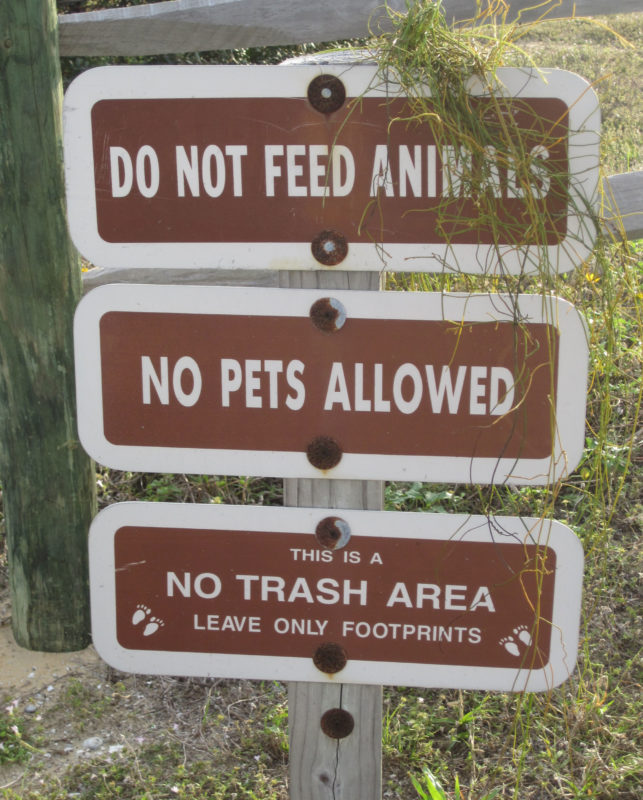
But many questions remain unexplored, and the research is far from over. For example, Hernandez and her colleagues are currently investigating the effects of water contaminants like mercury on white ibis health. The ibis-human relationship opens doors for questions about human behavior as well: Why do people feed birds? And when do people stop finding wildlife fascinating and start to think of them as a nuisance?
“I honestly think that, right now, it’s sort of like the honeymoon period with ibis in cities,” said Hernandez.
Florida residents appear to welcome visits from their feathered friends and enjoy feeding them. Some take the activity very seriously, providing feasts for the birds by bringing big bags full of dog food, chips, cakes and bread to where ibis congregate.
“But the minute that ibis flocks get larger, and they start breeding in earnest in urban environments, that’s when you’re going to see that honeymoon period end,” added Hernandez.
More importantly, as more ibis start moving into the city, they will come into contact more often with humans, which could lead to higher potential for disease transmission. To get ahead of the game, some urban parks in Hernandez’s field site have put up signs to discourage people from feeding white ibis as a way to make parks less attractive to the birds and reduce human-ibis contact.
Urbanization is pushing many wildlife species to take advantage of what cities have to offer. Just as there are pros and cons when humans move from rural to urban areas, wildlife also face their own set of opportunities and challenges. So far, it seems that some ibis are actually faring well after moving from the country to the city.
“In the end, ibis are opportunistic, and although they are ‘paying a price’ for living in the city, when it all comes out in the wash, they are doing well — so well that they’ve started to breed in urban areas,” said Hernandez. “Once that happens regularly, I think they will become a permanent fixture in the urban landscape.”



